20 Ducks With White Bellies (With Pictures)
As a duck lover, I’m always excited when someone challenges me to identify a duck by its plumage. There are so many small details that can easily mislead you when trying to tell one species from another. Just recently, I came across a post on social media where someone was asking for help identifying a duck with a white belly. Now, “white belly” might sound like an easy clue, but it’s trickier than you think. Some ducks appear to have white bellies because their chest or neck is white, but their actual belly is a different color. A great example is the male King Eider — its chest is white, but the belly is black.
So, which ducks truly have white bellies? There are quite a few, but below are some of the most common ones you’re likely to recognize right away.
- 1. Common Goldeneye (Male)
- 2. Barrow’s Goldeneye (Male)
- 3. Bufflehead (Male)
- 4. Northern Pintail (Male)
- 5. Common Merganser (Male)
- 6. Hooded Merganser (Male)
- 7. Smew (Male)
- 8. Canvasback (Male)
- 9. Mandarin Duck (Male)
- 10. Knob-billed Duck (Male)
- 11. Ring-necked Duck (Male)
- 12. Tufted Duck (Male)
- 13. Greater Scaup (Male)
- 14. Lesser Scaup (Male)
- 15. American Wigeon (Male)
- 16. Long-tailed Duck (Male)
- 17. Ancona Duck
- 18. Magpie Duck
- 19. Call Ducks
- 20. Some Muscovy Ducks
1. Common Goldeneye (Male)
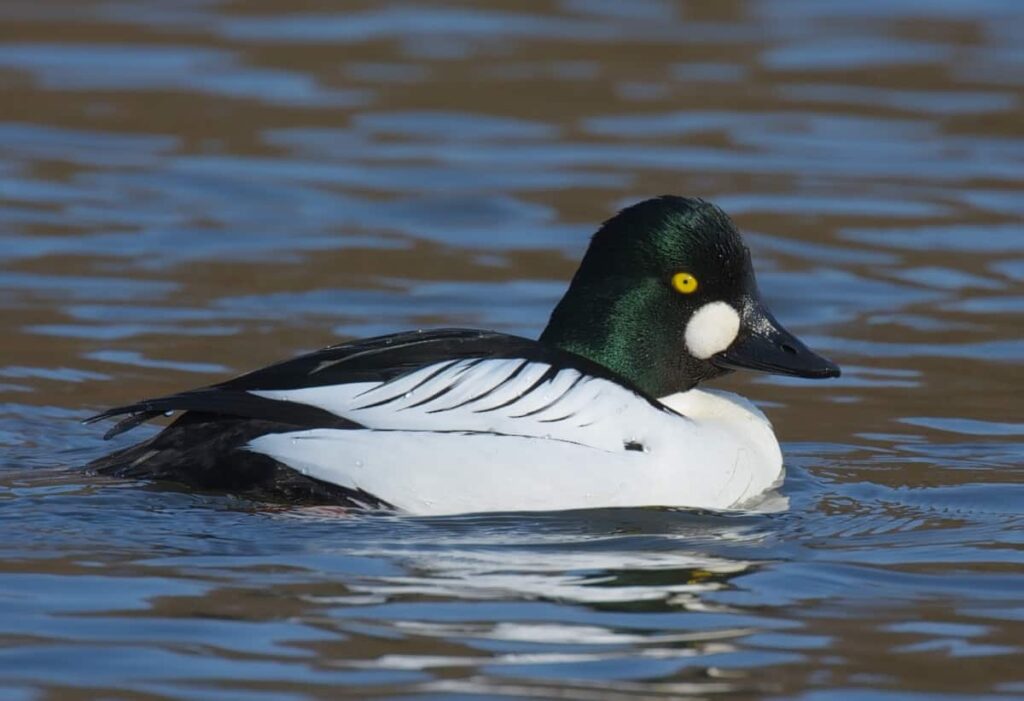
If you catch a glimpse of this duck diving and resurfacing, you’ll notice a clean white belly that contrasts sharply with its dark back and iridescent green-black head. That bright white belly is especially visible when it flies, flashing like a signal against the water. Beyond its looks, the Common Goldeneye is known for its loud whistling wings — a sound you can often hear before you even see it. They nest in tree cavities and will readily use nest boxes placed near lakes and rivers.
2. Barrow’s Goldeneye (Male)
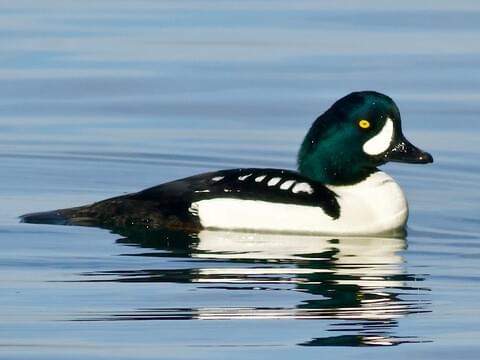
Unlike its close relative, the male Barrow’s Goldeneye has a crisp white belly paired with a dark back and a deep purple-black head marked by a crescent-shaped white patch near the bill. This white belly stands out during flight and while resting on the water. What makes them unique is their preference for fast-moving mountain streams during breeding season — unlike Common Goldeneyes, which favor lakes. They are less widespread and are considered more localized in North America and Iceland.
3. Bufflehead (Male)
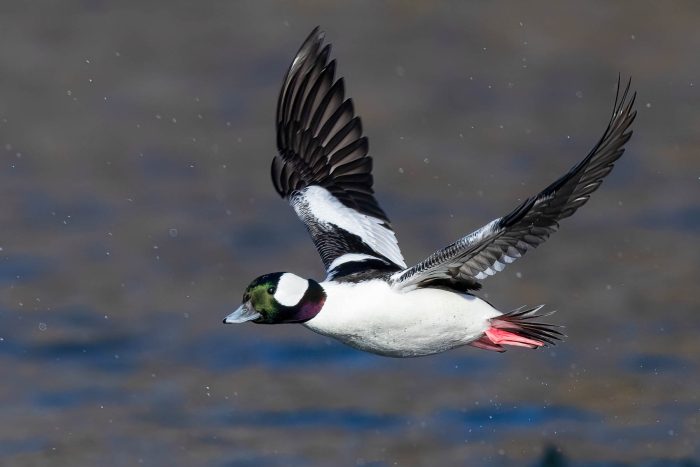
Small but striking, the male Bufflehead shows a bright white belly that blends into its white sides, contrasting with its glossy black back and colorful head. You’ll often see this white underside as they bob on the water or take short, quick flights. Interestingly, Buffleheads are one of the smallest diving ducks and use abandoned woodpecker holes — especially those made by Northern Flickers — to nest. They are loyal to their breeding sites and often return to the same location every year.
4. Northern Pintail (Male)
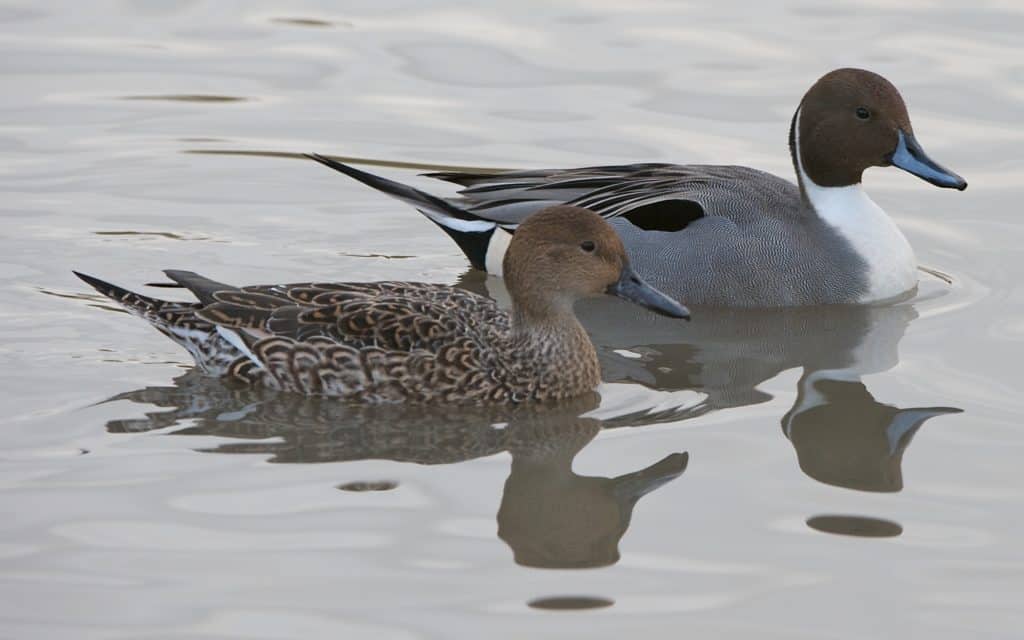
From the side, the male Northern Pintail displays a clean white belly that extends up through the chest and neck, forming a smooth contrast with its chocolate-brown head. This white underside becomes even more visible in flight or when the bird stretches its elegant, pointed tail. Aside from its looks, Northern Pintails are known for their long-distance migrations—some travel from North America all the way to Central America or even northern South America during winter.
5. Common Merganser (Male)
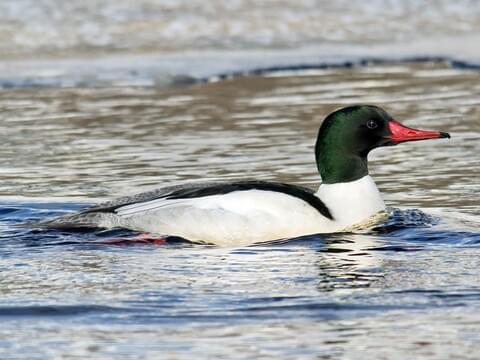
With its bright white belly and chest, the male Common Merganser can look quite mallard-like at a distance, but its long, slender red bill and dark green head set it apart. That white underside is especially obvious when they swim in clear water or take flight. These ducks are expert fish hunters, diving deep in rivers and lakes using their serrated bills to grip slippery prey—earning them the nickname “sawbills.”
6. Hooded Merganser (Male)
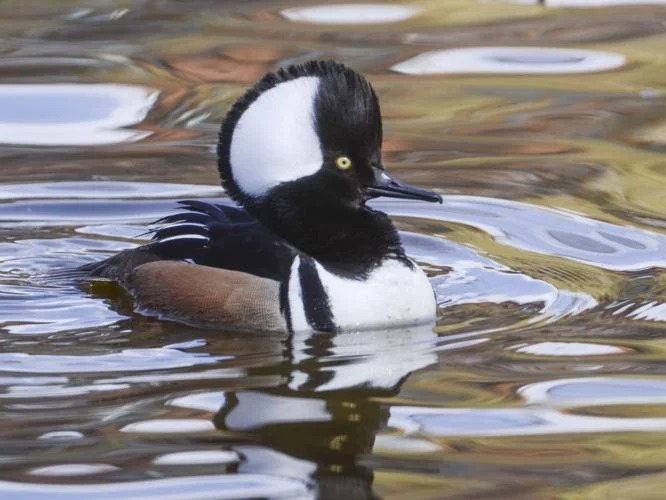
This small duck carries a crisp white belly that stands out beneath its dramatic black-and-white patterned chest and sides. You’ll notice the white belly most clearly when the bird is swimming or diving. What makes the Hooded Merganser fascinating is its fan-shaped crest that opens like a hood, displaying a bold white patch. Unlike many ducks, they prefer small woodland ponds and nest in tree cavities close to water.
7. Smew (Male)
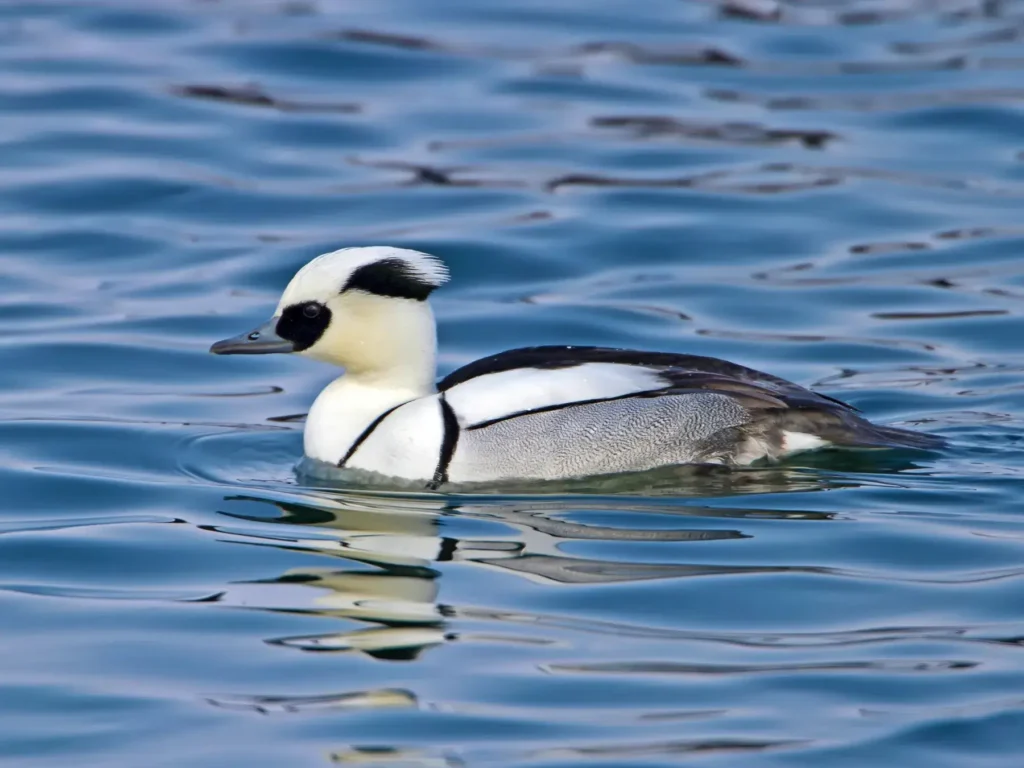
Almost entirely white, the male Smew has a snowy white belly that blends with its matching chest and body, while bold black markings decorate its back and head. This white plumage makes it easy to spot on icy lakes and rivers in winter. The Smew is a rare visitor to western Europe and North America, spending most of its time in northern Europe and Asia. It dives to catch small fish, often in cold, fast-flowing waters.
8. Canvasback (Male)
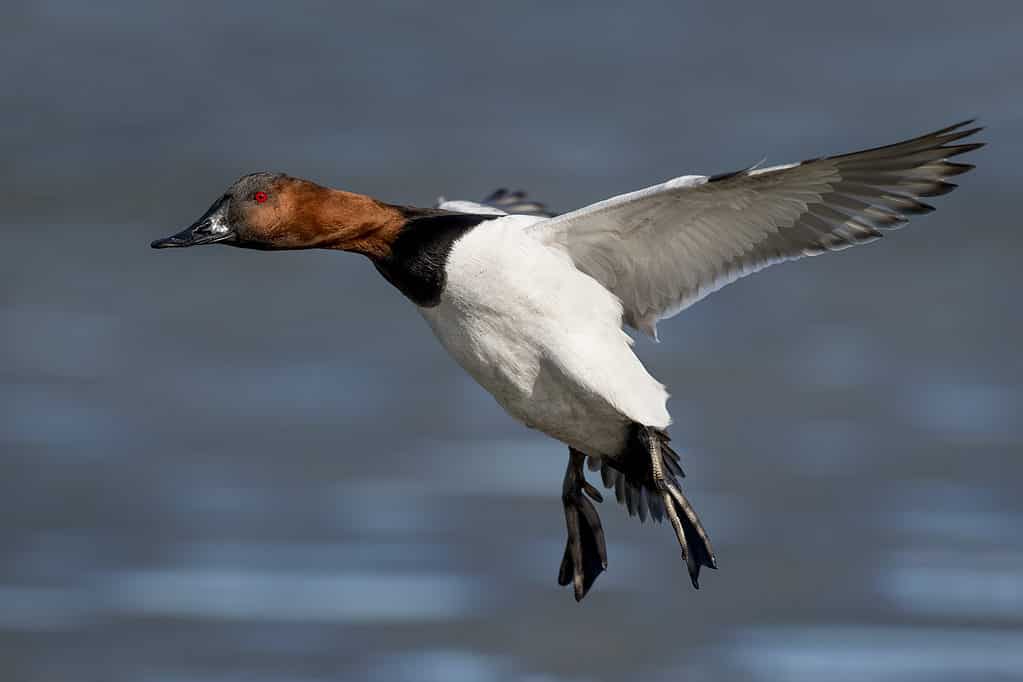
The male Canvasback features a white belly and body, giving it a clean, pale appearance from below, but unlike pure white ducks, its back has a soft grayish-white tint. This white underside contrasts beautifully with its chestnut-red head and black chest. What’s remarkable about Canvasbacks is their reliance on wetlands rich in wild celery—both for food and nesting. Habitat loss has affected them in the past, but conservation efforts have helped their numbers recover in many areas.
9. Mandarin Duck (Male)
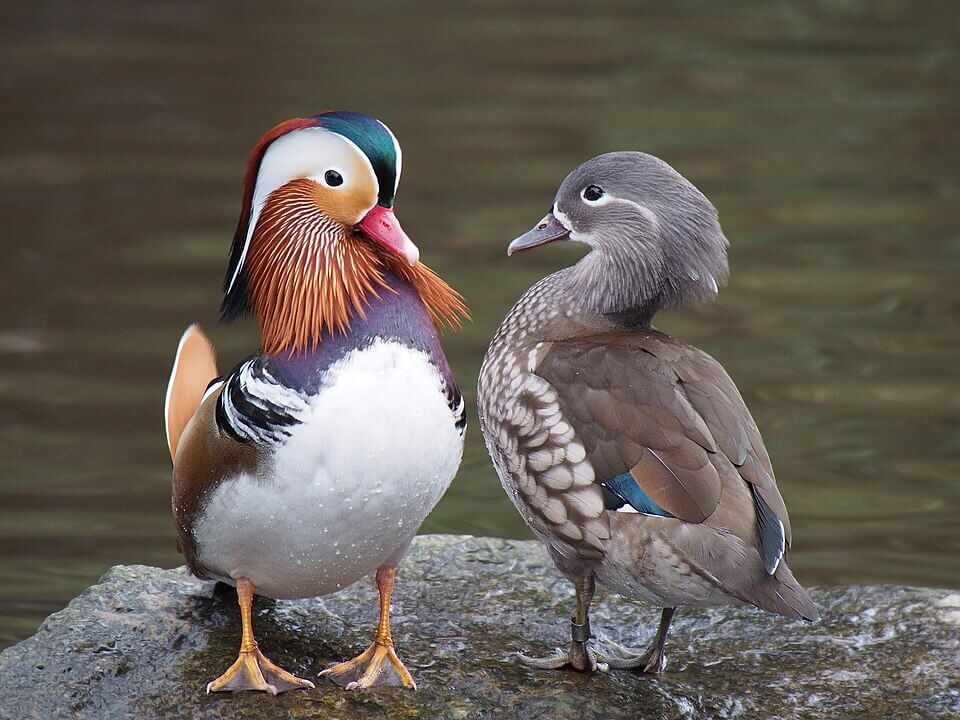
The male Mandarin Duck has a white belly that stands out beneath its colorful upper body—especially below the orange sails and purple chest. This white underside is most visible when the bird is swimming or standing on land. Mandarins are unique because they nest high in tree hollows, sometimes far from water. After hatching, ducklings must leap from the tree to the ground to follow their mother—an incredible sight in the wild.
10. Knob-billed Duck (Male)
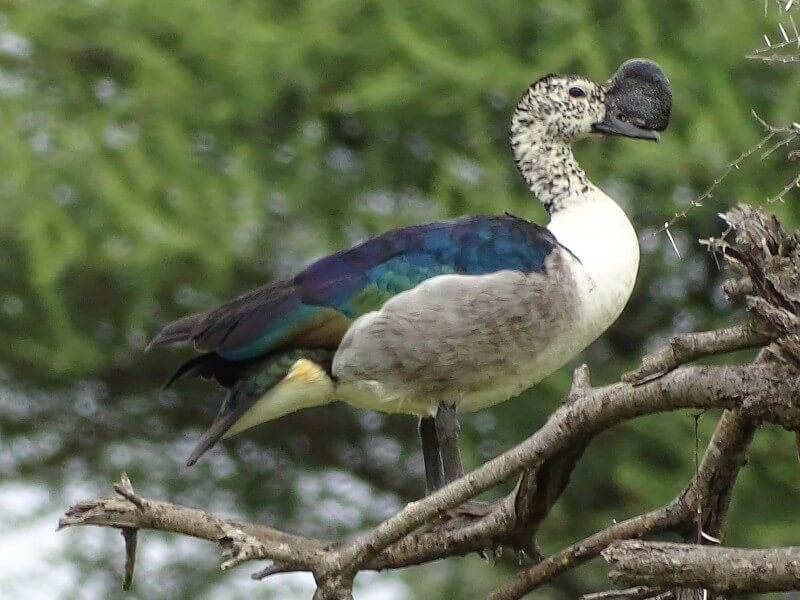
Also known as the Comb Duck, this species has a mostly white belly and chest that contrasts with its dark, glossy back and speckled neck. The white underside is especially clear in flight or when the bird is preening. One unusual feature is the male’s large black knob on top of its bill, which becomes more pronounced during breeding season. These ducks are commonly seen in Africa and Asia, often resting on tree branches—something most ducks don’t do.
11. Ring-necked Duck (Male)
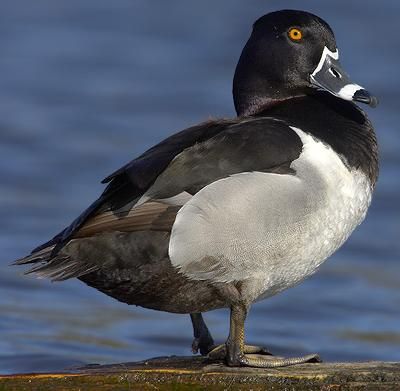
The male Ring-necked Duck has a white belly that sharply contrasts with its black chest, back, and head. Interestingly, despite its name, the chestnut-colored ring around its neck is very hard to see. Instead, people usually recognize it by the white ring around its bill. These ducks prefer freshwater ponds and marshes with tall vegetation, where they dive to feed on plants and insects.
12. Tufted Duck (Male)
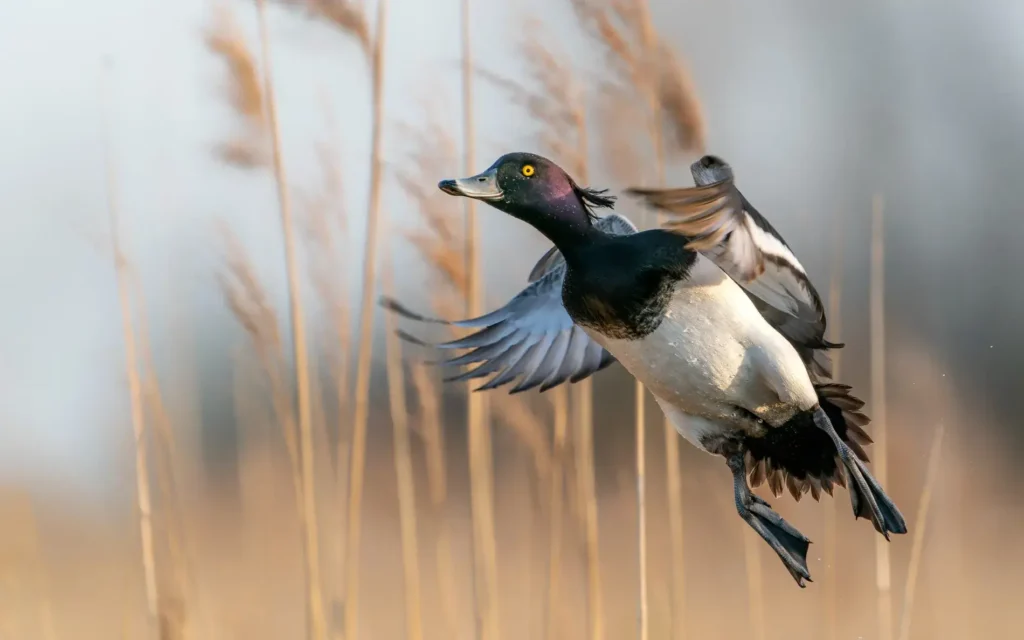
The male Tufted Duck shows a clean white belly that contrasts against its jet-black chest, back, and head. What makes this duck stand out even more is the small, drooping crest or “tuft” on the back of its head. Tufted Ducks are skilled divers, often forming large flocks on lakes and reservoirs in winter, especially across Europe and Asia.
13. Greater Scaup (Male)
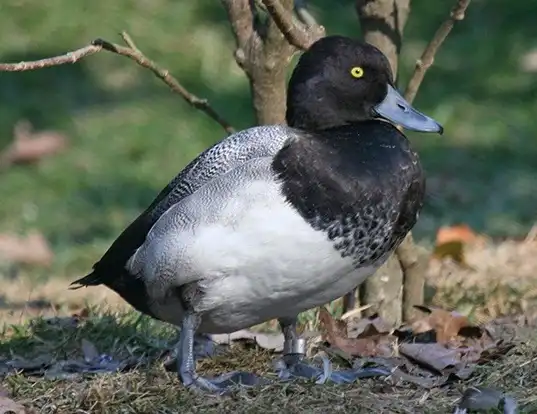
The male Greater Scaup shows a bright white belly that contrasts with its dark chest, head, and back. Like all the ducks, I have highlighted so far, this white underside is especially visible when the bird is swimming or diving. Greater Scaups are true diving ducks, often feeding underwater on clams, snails, and aquatic plants. In winter, they gather in large flocks on coastal waters, sometimes numbering in the thousands.
14. Lesser Scaup (Male)
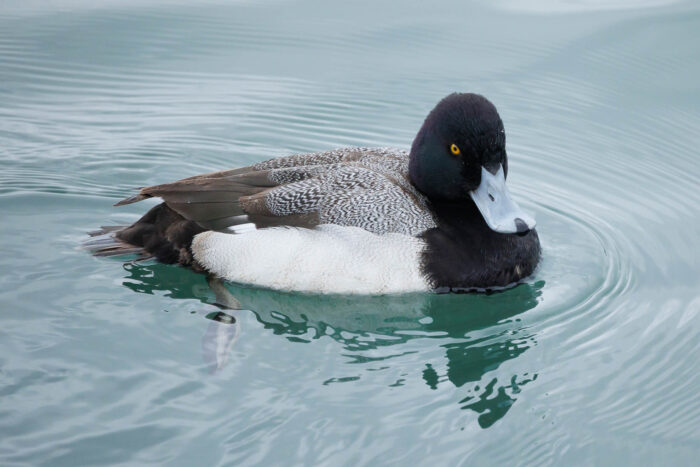
Just like its larger relative, the male Lesser Scaup also has a white belly, but it can appear slightly grayer depending on light and age. Above the belly, its chest and head are dark, with a purplish or greenish sheen. While they look very similar to Greater Scaups, Lesser Scaups are more common inland and are North America’s most widespread diving duck. They migrate in huge groups called “rafts,” often covering entire sections of lakes and rivers.
15. American Wigeon (Male)
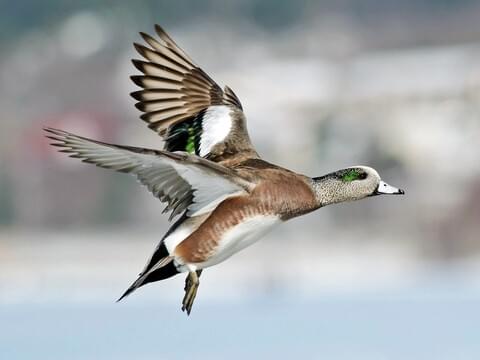
The male American Wigeon has a white belly and lower chest that contrasts with its rosy-brown sides and green-striped head. This pale underside is easy to spot in flight or when grazing on land. Unlike many ducks that dive, American Wigeons often steal food from other birds, especially diving ducks and coots. They make a soft whistling call that has earned them the nickname “baldpate.”
16. Long-tailed Duck (Male)
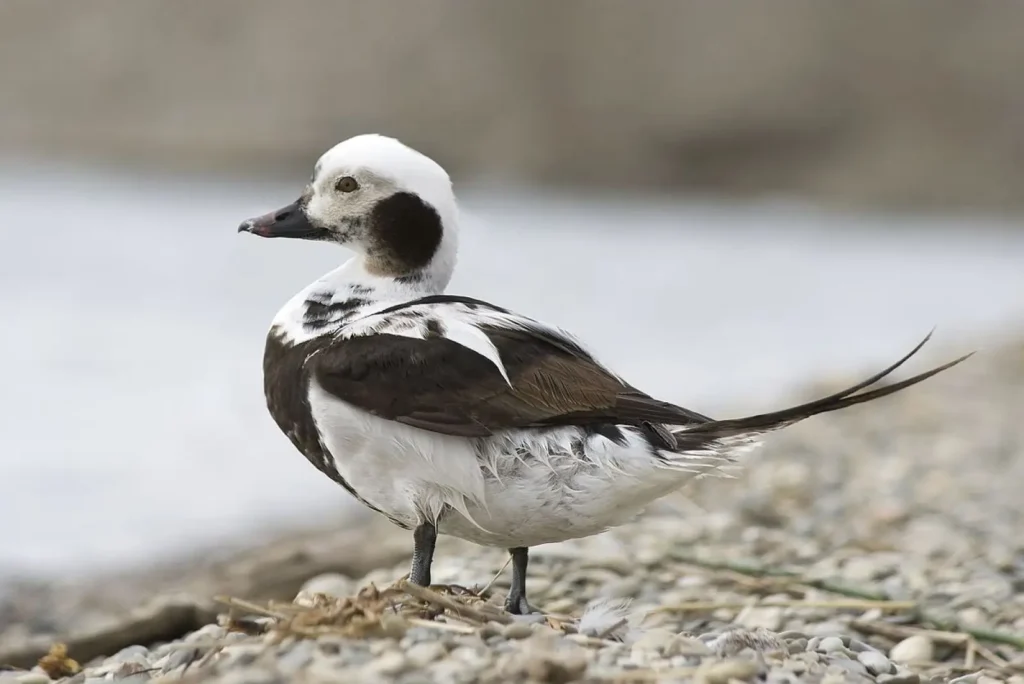
In winter plumage, the male Long-tailed Duck has a white belly and lower chest that stand out against its darker wings and long pointed tail. In summer, the pattern changes, but the belly still remains lighter. These ducks are amazing deep divers—known to reach depths of over 200 feet in search of shellfish and small fish. They spend most of their lives in cold Arctic waters and only come to coastal bays and lakes during winter.
17. Ancona Duck
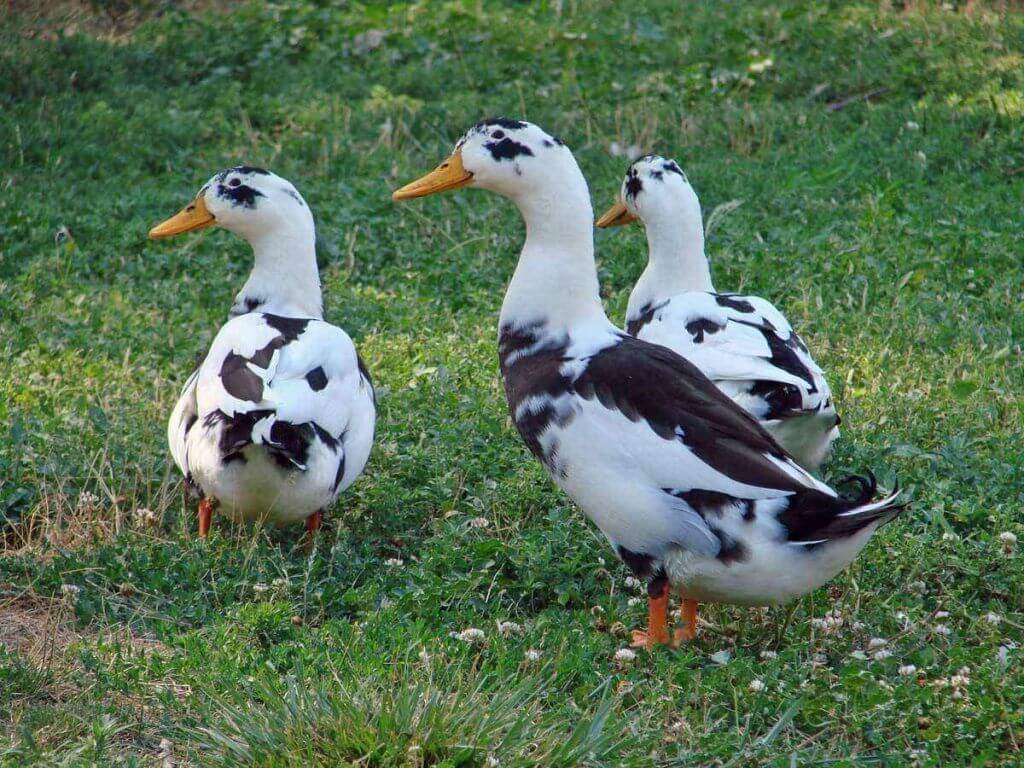
The Ancona Duck is a charming domestic breed known for its unique, mottled plumage that resembles ink splashes on white feathers. Their markings vary individually and can appear in colors like black, chocolate, blue, or silver. They have a calm temperament, are good egg layers, and are popular among small farmers and backyard keepers. Their bills and feet often match the color of their markings, adding to their distinctive appearance.
18. Magpie Duck
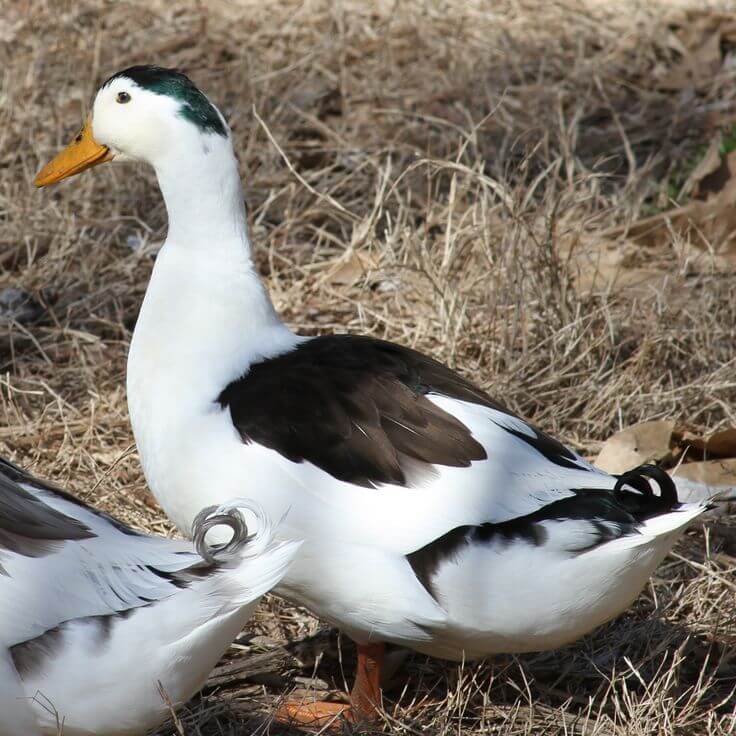
The Magpie Duck is a light domestic duck breed with sharp black-and-white plumage that resembles the pattern of a magpie bird. It has a white body with a dark patch on the head and a saddle-shaped marking on its back. This breed is active, alert, and well-regarded for egg production. They have slender bodies, upright postures, and a friendly nature, making them ideal for small farms and waterfowl enthusiasts.
19. Call Ducks
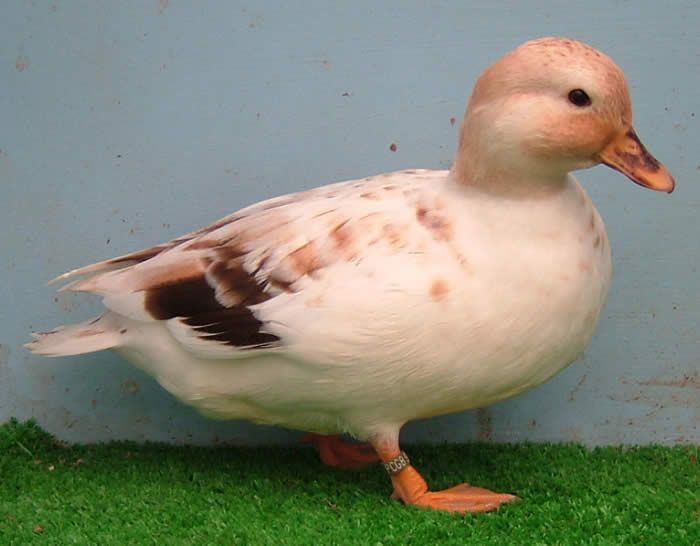
Call Ducks are a small, adorable breed originally used as decoys due to their loud, high-pitched calls. They have short bills, round heads, and compact bodies. Their plumage comes in a wide range of colors and patterns, and quite a few species have white bellies matched with different body shades. Today, they are mostly kept as ornamental or pet ducks because of their cute appearance and charming personalities. Despite their size, they are very vocal and full of energy.
20. Some Muscovy Ducks
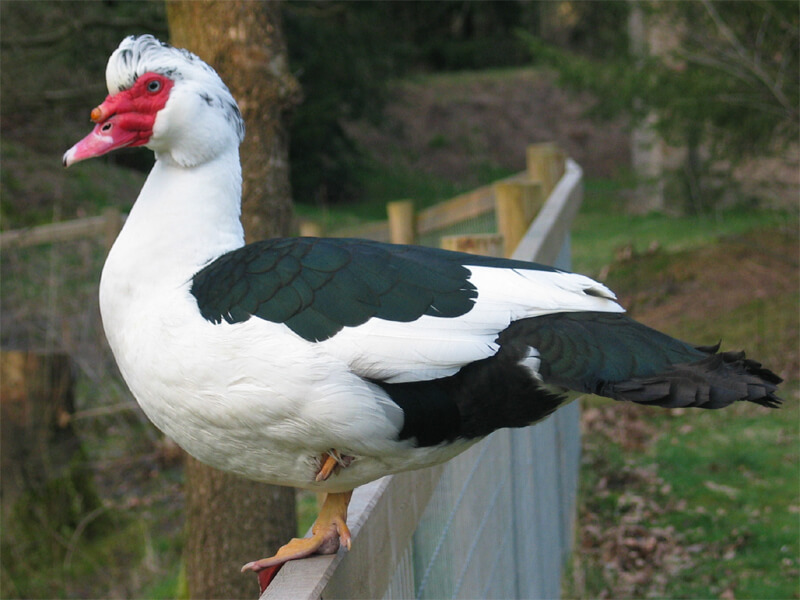
Like call ducks, Muscovy Ducks can vary widely in appearance, and while many have dark plumage with iridescent green or purple tones, some have lighter or mixed colors. Their feet can also be different shades—ranging from blackish to pale orange or even a mix like black with yellowish webs. They are known for the red, bumpy caruncles on their faces and their quiet, hiss-like sounds instead of typical quacks. Muscovies are hardy, excellent foragers, and often perch in trees due to their strong claws.
